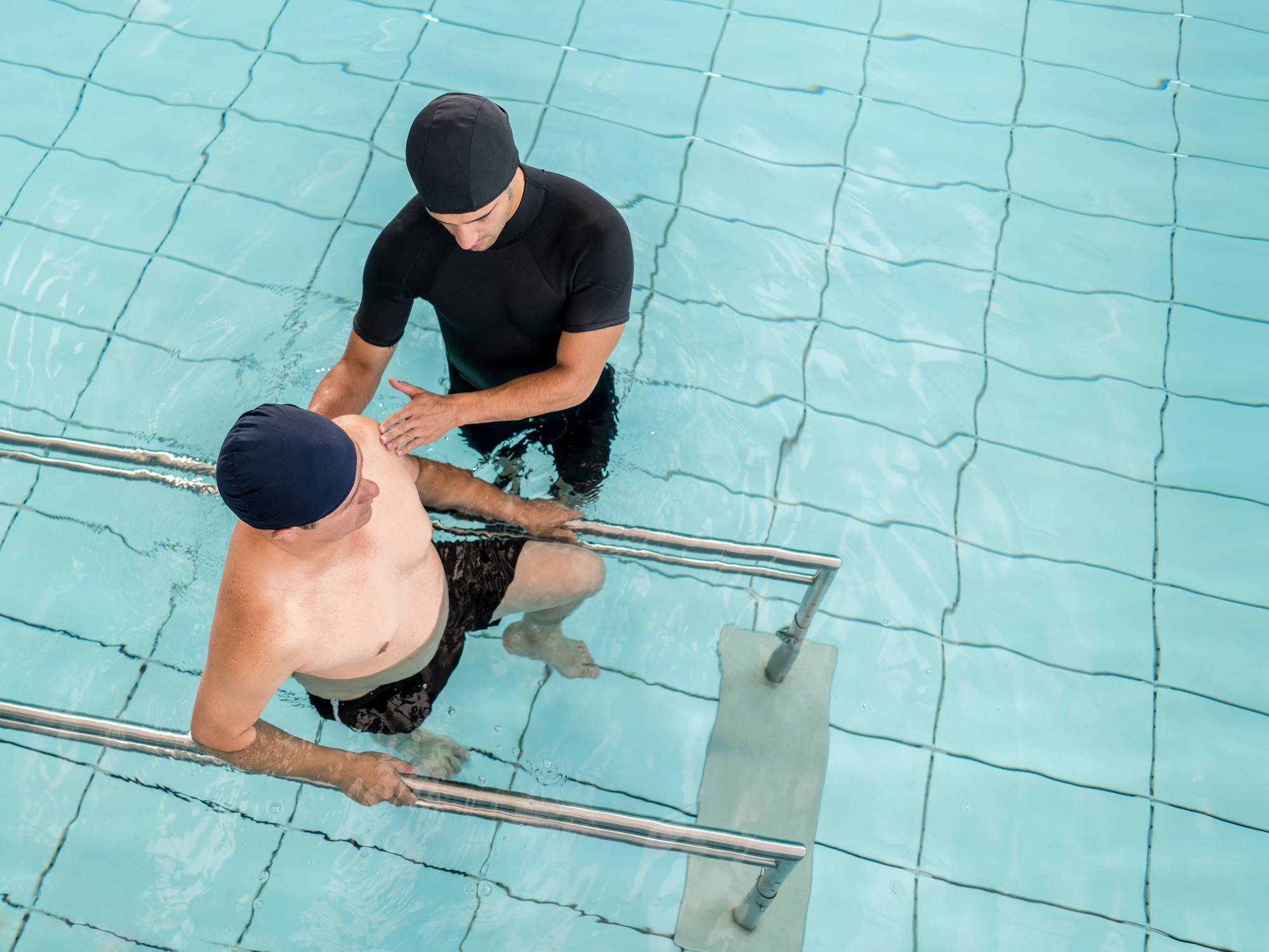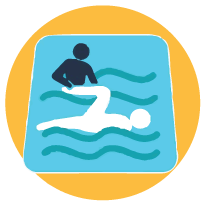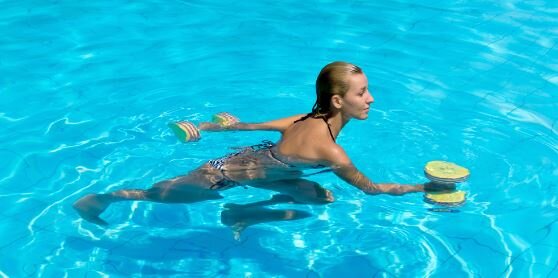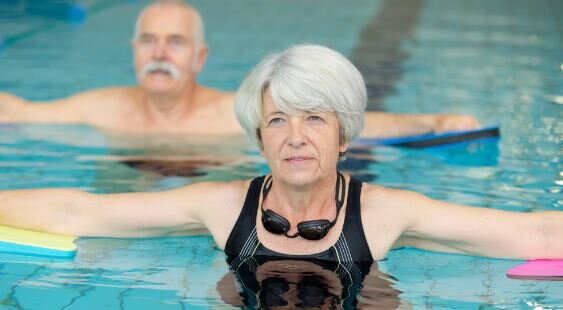
Benefits of Aquatic Therapy
Aquatic therapy is an incredible tool for decreasing physical pain and improving stability. Horizon has one of the area’s only indoor, heated, resistance therapy pool, as well as Certified Aquatic Therapists on staff. The natural buoyancy of the water reduces the stress on the body and the natural pressure of water reduces joint and soft-tissue swelling and provides enough resistance to strengthen muscle. Although Aquatic Therapy is commonly performed by a trained physical therapist in a clinical setting, there are still exercises and activities you can try yourself at home.
The water in own pool can provide a safe and comfortable environment for you to exercise more freely without the strain of gravity. The buoyancy of the water supports a portion of your body weight making it easier to move in the water and improve your flexibility. The water also provides resistance to movements, which helps to strengthen muscles.

Pool exercises can also improve agility, balance, and cardiovascular fitness. Many types of conditions greatly benefit from pool exercise, including arthritis, fibromyalgia, back pain, joint replacements, neurological, and balance conditions. The pool environment also reduces the risk of falls when compared to exercise on land.
“The water in our own pool can provide a safe and comfortable environment for you to exercise more freely without the strain of gravity. ”
Helpful Tips Before Starting Your At-Home Aquatic Therapy
-
Water shoes will help to provide traction on the pool floor.
-
Water level can be waist or chest high.
-
Use a Styrofoam noodle or floatation belt/vest to keep you afloat in deeper water.
-
Slower movements in the water will provide less resistance than faster movements.
-
You can use webbed water gloves, Styrofoam weights, inflated balls, or kickboards for increased resistance.
-
Never push your body through pain during any exercise.
-
Although you will not notice that you sweat with pool exercises, it is still important to drink plenty of water.
5 Practical Aquatic Therapy Exercises
 Water walking or jogging
Water walking or jogging
As you get ready to go for a run, play some ball, or take to the golf course, remember that an increase in activity can also mean an increase in risk of injury. If you are less active in the winter, jumping back into summer activities too quickly can create strain on your body and result in an unwelcome injury. Nobody likes being in pain, however, with proper planning and treatment from your local physical therapy team, it doesn’t have to keep you from staying active this summer. Below we are reviewing three of the most common summer injuries and how physical therapy can help you get and stay back on your feet!
Ankle Sprains
Ankle injuries, especially ankle sprains, are common injuries suffered by people participating in outdoor activities. A painful ankle can be debilitating and leave you longing for your couch. Luckily, a physical therapist can help! They will create a treatment plan to help reduce pain and swelling and increase range of motion as well as get you set up with a plan to keep it from happening again!
Knee Injuries
Knees are another one of the most commonly injured joints in the body, especially in summertime. When suffering from knee pain, it’s important to seek treatment right away to avoid it progressing into a torn ACL. A physical therapist can design a treatment plan including stretches, strengthening exercises, stability and more to have you back in action as quickly as possible.
Back Pain
Following a longer period of inactivity, like winter, your body isn’t used to running, jumping, and making other strenuous movements. When warm weather hits and our activity increases so does the chance of straining your back. A physical therapist can provide you with various exercises and stretches to prevent the staring before it even starts!

 Forward and side lunges
Forward and side lunges
Standing near a pool wall for support, if necessary, take an oversized lunge step in a forward direction. Do not let the forward knee advance past the toes. Return to the starting position and repeat with the other leg. For a side lunge, face the pool wall and take an oversized step to the side. Keep toes facing forward. Repeat on the other side. Try 3 sets of 10 lunge steps. For variation, lunge walk in a forward or sideways direction instead of staying in place.
 One Leg Balance
One Leg Balance
Stand on 1 leg while raising the other knee to hip level. Place a pool noodle under the raised leg, so the noodle forms a “U” with your foot in the center of the U. Hold as long as you can up to 30 seconds and switch legs. Try 1-2 sets of 5 on each leg.

 Side-stepping
Side-stepping
Face the pool wall. Take sideways steps with your body and toes facing the wall. Take 10-20 steps in 1 direction and then return. Repeat twice in each direction.
 Hip kickers at pool wall
Hip kickers at pool wall
Stand with the pool wall to one side of your body for support. Move 1 leg in a forward direction with the knee straight, like you are kicking. Return to start. Then move the same leg to the side, and return to the start position. Lastly, move that same leg behind you. Repeat 3 sets of 10 and switch the kicking leg.